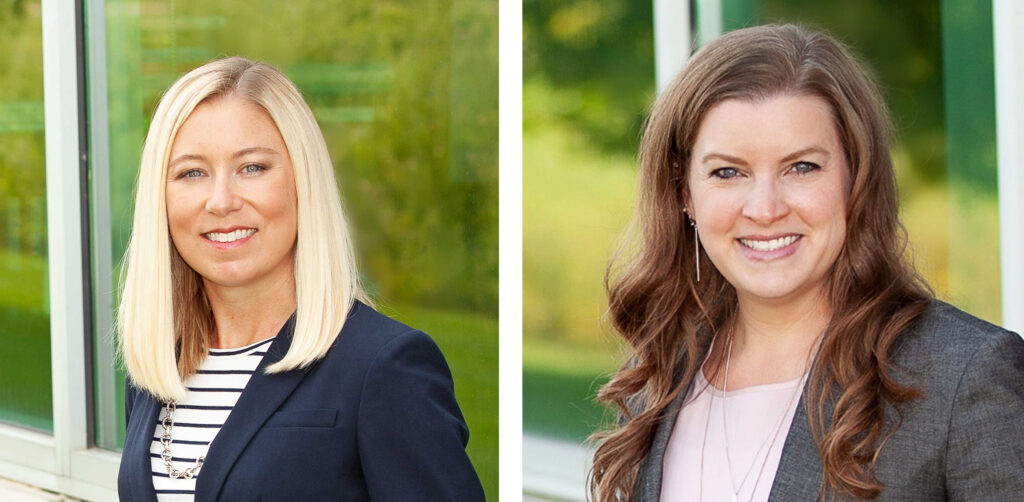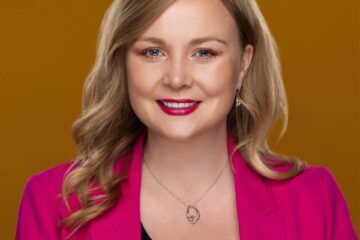By Ashlee Vieregger, senior lead adviser, Foster Group and Brittany Heard, lead adviser, Foster Group
This is the third of a four-part guest commentary series from Foster Group that aims to provide insight into navigating your financial health, from early career to retirement. Read parts one and two here.

Planning for retirement can be one of the most daunting financial stages of life because there are so many competing priorities to manage and responsibilities to juggle. Should I pay down debt or accelerate my savings? How will I help my children cover the cost of college? What can I do to support my aging father on a fixed income? What about my own physical, mental and financial health? Women especially are pulled in many directions and burnout is all too common. Read on for some tips to help you manage it all. You can do this, and you are not alone!
Put your oxygen mask on first before assisting others
If you recently have taken an airline flight, you are probably familiar with the preflight emergency instruction to put your oxygen mask on first, before assisting others around you, and the logic is sound. If you can’t breathe, you can’t help anyone else around you. Safeguarding your financial health by saving for retirement is similar. Without building a solid foundation for your financial independence, it is difficult to assist others in a meaningful way. Even in your peak earning years, you may still lack financial confidence, because there is so much demand on your cash flow. “Analysis paralysis” can lead us to freeze up, and to tell ourselves we’ll address it next week. Soon, months and years will have gone by with little progress.
Creating a financial plan makes all the difference in regaining a sense of control and achieving peace of mind. Simply put, a plan is a decision-making framework for life’s ups and downs. It usually starts with identifying and quantifying your long-term goals, mapping out your income, expenses, savings, debts and investments, and identifying the steps you’ll need to take to get from Point A to Point B. As advisers who often work with women and families in their 40s and 50s, one of the most frequent questions we hear is, “How can I be sure that I’ll have enough?” This is exactly what creating a financial plan can help you address. We advisers act as trusted guides and partners on this lifelong financial journey, providing encouragement, expertise and accountability. A plan is only valuable if you implement it!
Embrace your role as an investor and save, save, save!
Recent research by Fidelity reports that women investors are less confident than men, despite women earning about 1% greater investment returns than men over longer periods of time. In the work we do with women and families, we try to normalize talking about money and investing, to help our clients gain confidence and familiarity with these concepts. A few times a year, we host women’s “conversation circles” where small groups of 10-15 women discuss financial topics in an intimate setting, paired with social time, sips and snacks, journaling, guided questions, and open discussion. The insights and stories that come out of these groups are in equal turns funny, sad, poignant and uplifting, and the beginnings of new friendships are forged.
Much conventional wisdom on investing suggests that, as we approach retirement, we should adjust our portfolios to more conservative allocations, and it’s easy to understand why. There is less time before retirement for riskier investments, like stocks, to recover from any downturns before you start taking withdrawals from them. While conventional wisdom can be helpful in general, your situation is unique, and striking the right balance between investment risk and reward looks different for everyone.
Whether you are a more conservative or aggressive investor, this is your key time to save, save, save, especially if you are making up ground from earlier years when you weren’t able to save as much. Consistently increasing savings is the simplest and most bulletproof financial plan when it comes to preparing for retirement, and there are tax-advantaged ways to do it. “Catch-up contributions” to employer retirement plans ― 401(k)s, 403(b)s, etc. ― allow workers 50 or older to make extra tax-deductible retirement contributions. IRA contribution limits also rise for workers aged 50-plus.
Keep a pulse on your financial health
As we get older, our doctors advise us to come in more often for regular checkups and special tests, like mammograms and colonoscopies. We recommend the same approach in caring for your financial health. As you get closer to retirement age, more frequent financial checkups are good medicine to make sure that your financial picture is healthy. We recommend annual checkups, at least, for many clients, but your regimen will depend on your preference and the financial complexity of your situation.
During your financial checkups, pay close attention to your vital signs: income, expenses, investments, savings and debts. Every few years, review your estate plan and philanthropic priorities. Outside of your regular checkups, if you experience a significant life change (career change, job loss, major medical diagnosis, receiving an inheritance, etc.), it’s time to review your financial situation, from top to bottom, to determine if your plan should be adjusted.
Here’s to a happy and healthy financial journey toward retirement!
PLEASE SEE IMPORTANT DISCLOSURE INFORMATION at www.fostergrp.com/disclosures. A copy of our written disclosure Brochure as set forth on Part 2A of Form ADV is available at www.adviserinfo.sec.gov.

